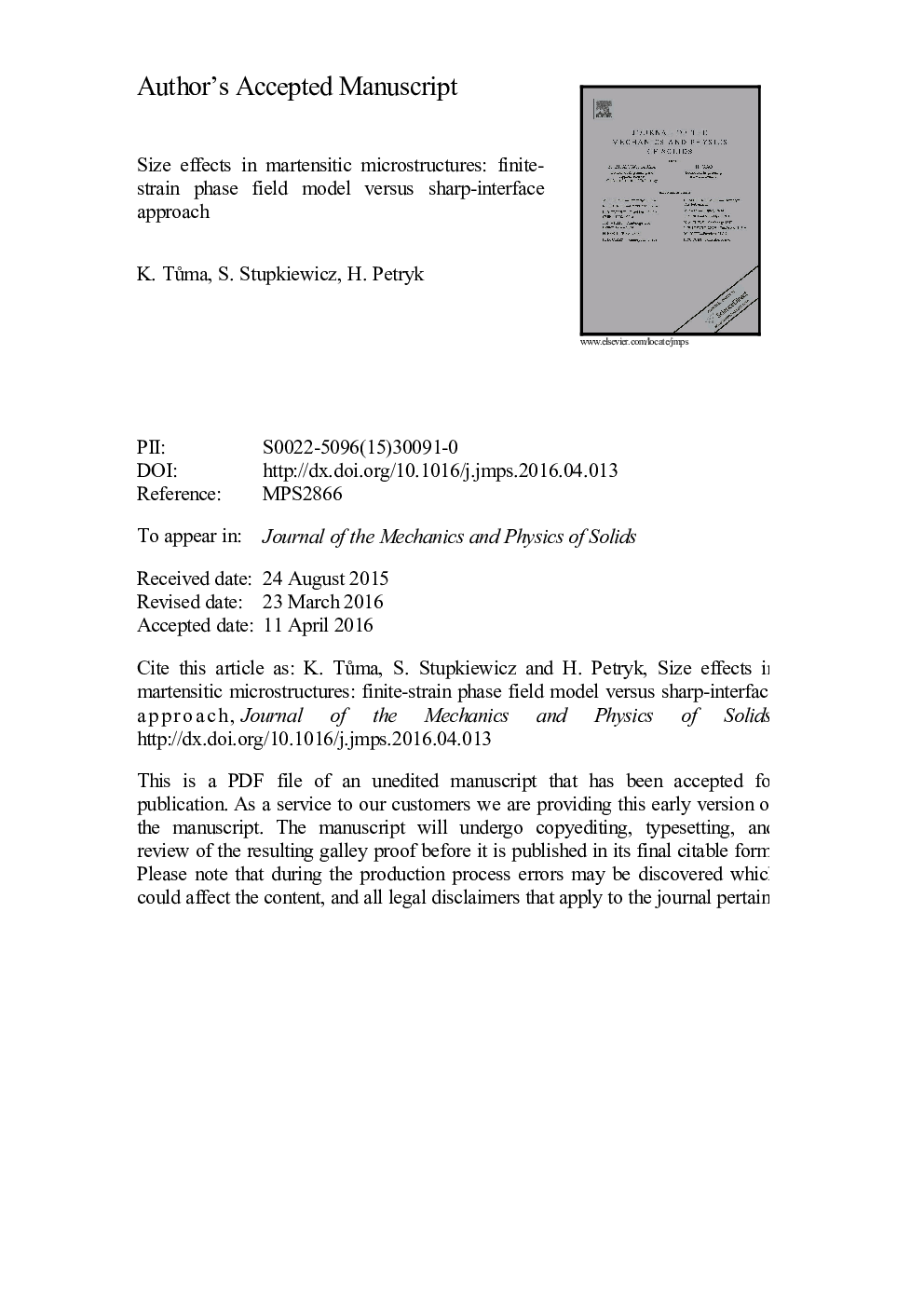| Article ID | Journal | Published Year | Pages | File Type |
|---|---|---|---|---|
| 797207 | Journal of the Mechanics and Physics of Solids | 2016 | 33 Pages |
Abstract
A finite-strain phase field model for martensitic phase transformation and twinning in shape memory alloys is developed and confronted with the corresponding sharp-interface approach extended to interfacial energy effects. The model is set in the energy framework so that the kinetic equations and conditions of mechanical equilibrium are fully defined by specifying the free energy and dissipation potentials. The free energy density involves the bulk and interfacial energy contributions, the latter describing the energy of diffuse interfaces in a manner typical for phase-field approaches. To ensure volume preservation during martensite reorientation at finite deformation within a diffuse interface, it is proposed to apply linear mixing of the logarithmic transformation strains. The physically different nature of phase interfaces and twin boundaries in the martensitic phase is reflected by introducing two order-parameters in a hierarchical manner, one as the reference volume fraction of austenite, and thus of the whole martensite, and the second as the volume fraction of one variant of martensite in the martensitic phase only. The microstructure evolution problem is given a variational formulation in terms of incremental fields of displacement and order parameters, with unilateral constraints on volume fractions explicitly enforced by applying the augmented Lagrangian method. As an application, size-dependent microstructures with diffuse interfaces are calculated for the cubic-to-orthorhombic transformation in a CuAlNi shape memory alloy and compared with the sharp-interface microstructures with interfacial energy effects.
Related Topics
Physical Sciences and Engineering
Engineering
Mechanical Engineering
Authors
K. Tůma, S. Stupkiewicz, H. Petryk,
